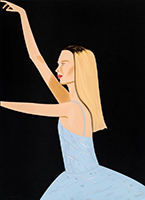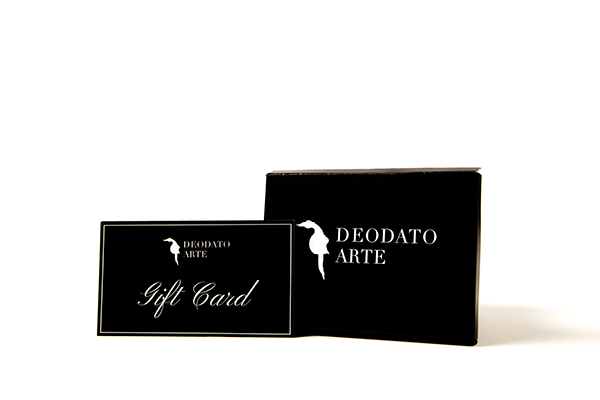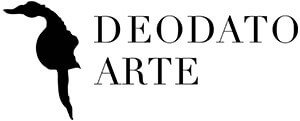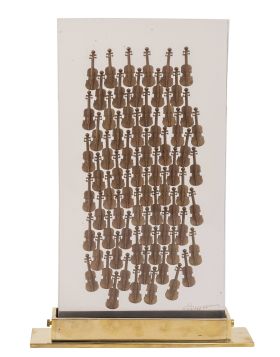
The series by the artist Arman, “Accumulation” of found objects is the artist’s most famous series.
Armand Pierre Fernandez was born in Nice, France in 1928. Mostly known as Arman, he was among the founders of the Nouveau réalisme movement, together with art critic Pierre Restnay and artists such as Yves Klein, and Martial Raysse.
Artworks by Arman range from drawings and paintings to monumental public sculptures. He would, as he describes, he “specialize in everything”, but we know him best because of his stacked tanks, cars, or smaller modern-day objects like golf tees and his recurring symbols of violins.
The Story Behind the Series by Arman Accumulation
Arman was a sculptor and a painter, sometimes both at the same time. His art is mostly focused on everyday objects and their purpose or meaning for modern society.
Accumulation is a series of artworks which consists of objects that are stacked, arranged, which have been wasted or discarded in modern life. Arman accumulates those mundane objects, destroys them, colours them to revive them in a work of art that enhances their form, material and the very existence of the object as such, leading us to reflect on the use and primary purpose they had in their "previous life". He underlines the limitless quantities as well as the abundance of those objects, showing them in a realistic yet condensed way.
Violins, other modern day objects and repetition became more and more predominant in his artworks. Arman, Accumulation is a series of objects accumulated, destroyed, colored, and at the end, revived with a new message.
Inspiration
Since his father owned an antique shop, he could find unique daily-life objects and transform them in his artistic way. His inspiration from the mundane objects and violin, with influences of his dad’s shop and interest in cellos, shaped his artistic progress.
Midway through his life, he got curious about the Dada movement and Italian Futurism, as well as he experimented with Street and Public art. Then, this interest and experimentation led him to his most-known series, Accumulation.
The Most Famous Accumulations
His most known works include, by the artist Arman, Long-term Parking, and Hope for Peace, which both are works that consist of stacked vehicles. These two are both public artworks on display. The artworks are the size of a tall building!
Arman: Hope for Peace
The artist finds elements in the objects he uses in his works significant. To tell an important story Arman creates a tower of some sorts from tanks and other military vehicles, in this artwork, Hope for Peace.
“The work symbolizes the end of Lebanon’s 1975-1990 civil war by embedding the tanks and other military vehicles in concrete to eradicate their original use and render them forever still and silent. It is also a warning for those who still desire to make war. By seeing the arms embedded in concrete, they will tend to think twice because Lebanon has suffered a lot and it is time to be friends again.”
Arman describes the intent by taking advantage of the message that each object tells, in this case, the military vehicles, tell the story. The work was commissioned by the Ministry of Defence and it is a monument located in Yarze, Lebanon, as a celebration of the end of the Lebanese Civil War 1990.

Arman: Long-term Parking
Similarly, to Hope for Peace, this work is a public sculpture that is a stack of 60 cars on top of each other embedded in concrete, almost 20 meters high with 1600 tons of concrete.
The artist had mentioned that his intention in creating this artwork was to see the cars’ metal and wheels rot by time until there is only a concrete column.
The work was opened to the public in 1982 and it is located by the Château de Moncel in Jouy-en-Josas, France.
The Limited edition Accumulation artworks
Arman’s artworks vary from 20 meters tall concrete blocks to 20 cm tall Plexiglass containers. There are limited edition Accumulation artworks with a variety of objects such as golf tees, tempera tubes, and of course, musical instruments besides his famous public sculptures.











 Register
Register Wishlist
Wishlist Contact Us
Contact Us





